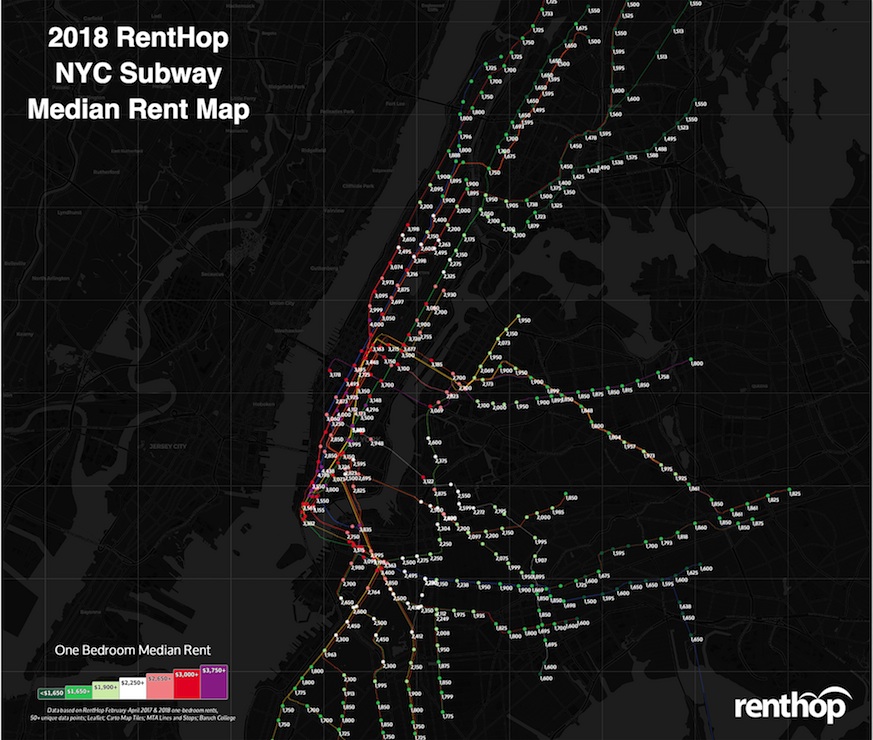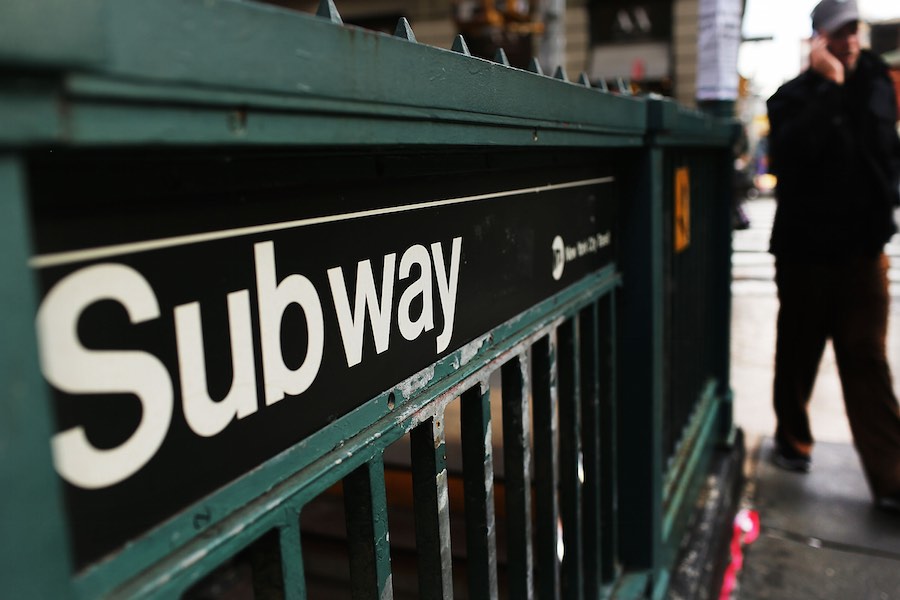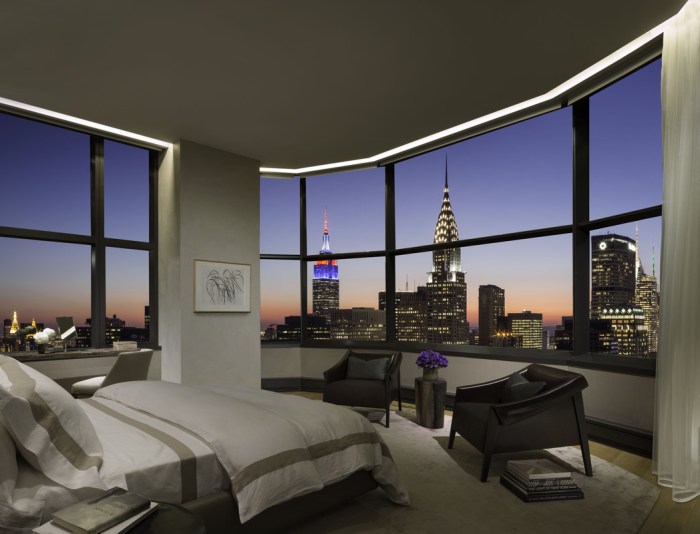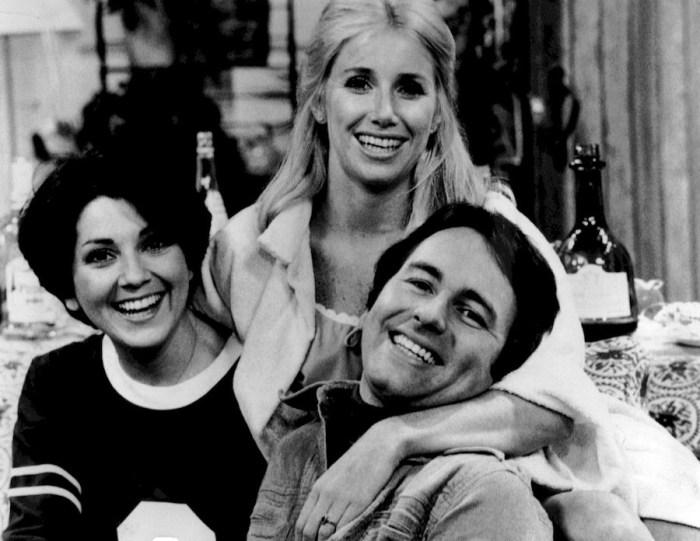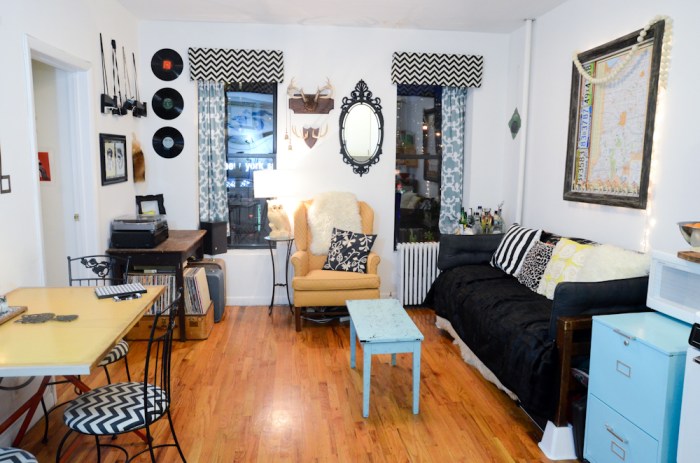Everyone in New York City wants to live close to a subway stop, and that usually means apartments steps away from a station are more expensive. But that seems to be changing, according to a recent report from RentHop.
The real estate site mapped out rental prices by subway stops to help apartment hunters see how much it would cost them to live near their most convenient line.
RentHop analysts used the site’s data on the rent price of one-bedroom New York City apartments from February through April of 2017 and 2018, and combined that with data on MTA lines and stops that was compiled by CUNY Baruch College.
To get accurate prices of how much it costs to live near a certain stop, RentHop looked at 50 non-duplicate listings within 0.6 miles of a subway stop and calculated the median rents. (If there were less than 50 listings that close to a certain stop, they broadened the range to listings 1.2 miles away)
Then all that info went into an interactive map so renters can see how much the price of these subway-station-adjacent apartments changed from 2017 to 2018.
And luckily, lots of these listings got cheaper. Around half of apartments near subway stops in Manhattan saw negative rent growth, the report found — including 34 St-Herald Square, which serves the B/D/F/M/N/Q/R/W trains, which saw a rent decrease of 8.2 percent, and Chambers Street, which serves the 1/2/3 trains, which saw a rent drop of 10.2 percent.
Apartments are also getting cheaper around subway stops in Brooklyn, especially the ones along the L line, which is slated to shut down in April 2019, though some near the Metropolitan Av – G Train stop and the Central Av – M Train stop saw price dips, as well.
“Our findings indicate that we are now in a renter’s market — net effective rents are dropping, specifically in Brooklyn and Northern Queens. This means that more landlords are offering concessions, and that is a good sign for New Yorkers,” said Shane Lee, RentHop data analyst, in an email. “Many renters are getting one month or two months free, and the fact that there is more supply than demand definitely gives renters more negotiating power.”
The Bronx, however, is the borough bucking the trend. Some subway stops closer to Manhattan saw rent increases of more than 5 percent from 2017 to 2017, such as 138th St., which saw rents go up 8.5 percent, and Jackson Ave, for which rents increased 9.9 percent from the previous year.
What NYC subway stops had the biggest rent decreases?
Nassau Av (G) – $2,375 (YoY -20%)
116th St (B/C) – $2,150 (-13.8%)
City Hall (R/W) – $2,915 (-11.3%)
Marcy Av (J/M/Z) – $2,488 (-11.2%)
Chamber St (1/2/3) – $3,550 (-10.1%)
36 Av-Washington Av (N/W) – $2,200 (-9.7%)
What NYC subway stops had rent increase?
East Broadway (F) – $2,825 (YoY 14.1%)
Park Place (2/3) – $4,029 (12.2%)
East 180th St (2/5) – $1,900 (10.0%)
Harlem – 148th Street (3) – $1,900 (8.6%)
86th St (4/5/6) – $3,050 (8.0%)
East 143 St-St Mary’s St (6) – $1,879 (7.9%)
